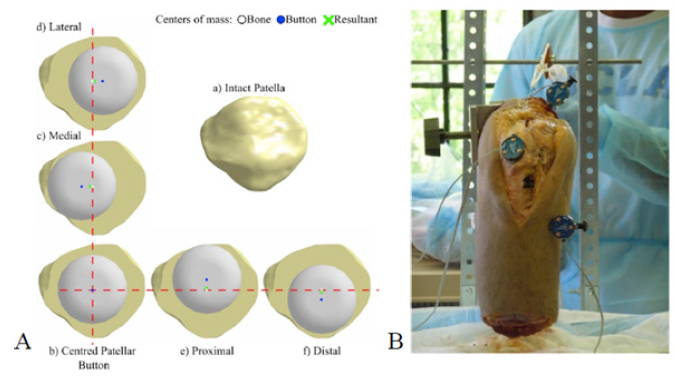The Effect of Patellar Button Placement on Gait and Patellar Stresses Following Total Knee Arthroplasty by Dmitriy Peresada* in Orthopedic Research Online Journal_ Orthopedic Research journal

Abstract
Background:
In total knee arthroplasty with patellar resurfacing, surgeons are often faced with a
choice of where to position the patellar button. Patellar button positioning
has been studied in relation to patellar tracking and risk of subluxation.
Consequently, medial placement has been recommended. However, postoperative
gait and risk of periprosthetic complications have not been thoroughly
addressed in relation to patellar button positioning.
Objective:
To establish a generalized criterion for patellar button positioning during
total knee replacement (TKA)
to reduce the risk of postoperative gait abnormalities, patellar fracture,
pain, and stress wear.
Methods:
Five distinct button positions were analyzed. A previously-validated gait model
was customized with data obtained from cadaveric patellae to evaluate
individual quadriceps forces. The maximal combined quadriceps force during gait
was applied to a finite element analysis model to calculate patellar von Mises
stresses for all button positions, as well as for a large diameter button
covering most of the patellar resurfaced area.
Results:
Significant differences were found in average forces exercised by individual
quadriceps muscles during gait. Distal and medial configurations produced the
lowest individual quadriceps muscle forces. Bone stress ranged from 12.45MPa to
12.57MPa. The button stress ranged from 11.27MPa to 17.20 MPa, with distal and
centered placement, respectively
https://crimsonpublishers.com/oproj/fulltext/OPROJ.000631.php
Crimson
Publishers: https://crimsonpublishers.com/
For more articles in Orthopedic Research journal,
Please
click on below link: https://crimsonpublishers.com/oproj/



No comments:
Post a Comment